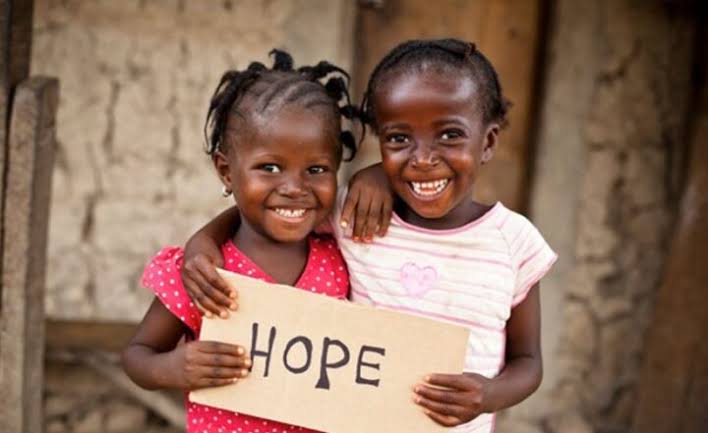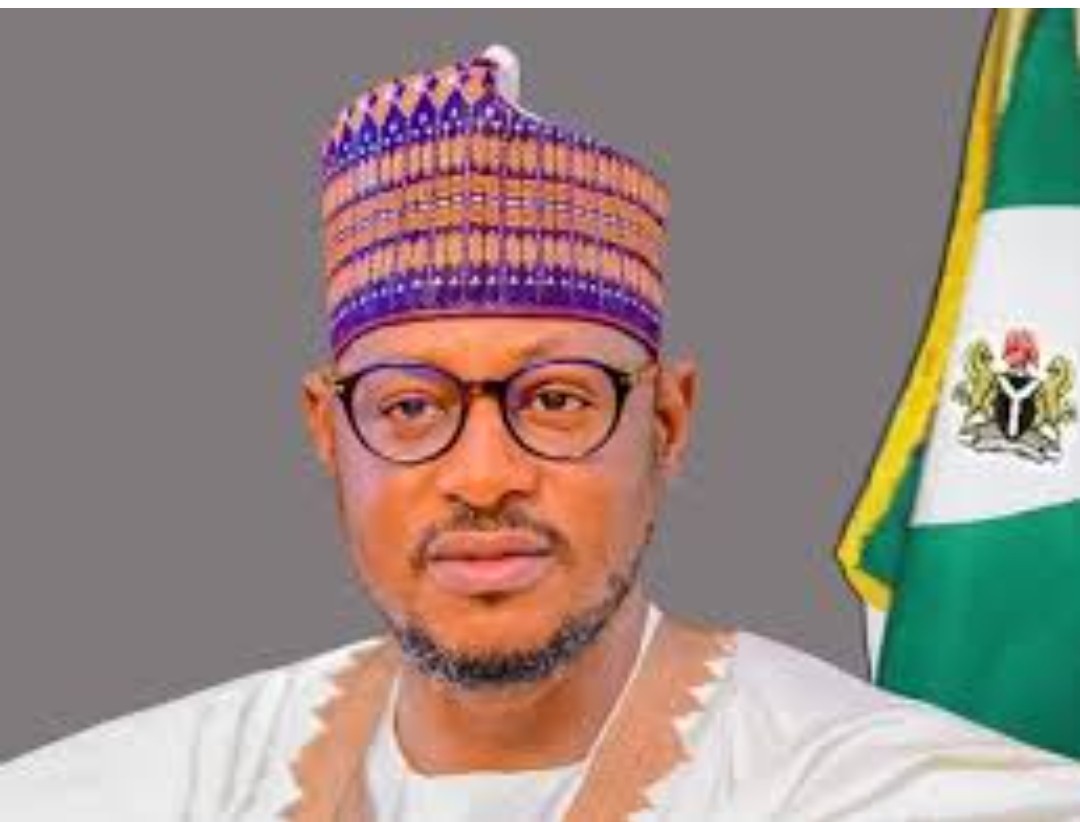The International Day of the Girl Child, celebrated annually on the 11th of October, continues to serve as a global platform to recognise the rights and potentials of girls around the world. It is a day that belongs to everyone who cares about girls and their rights. This year’s theme, “Girls’ Vision for the Future,” speaks directly to the aspirations, dreams, and unrelenting spirit of young girls as they envision a world that is more inclusive, equitable, and sustainable. Their vision isn’t simply one that paints a picture of hope, but one that demands action, opportunity, and representation. For on this day, we come together to recognize and advocate for the full spectrum of girls’ rights. As we reflect on this theme, it becomes essential to explore the multitude of ways in which girls are driving forward the vision for the future.
A Vision Rooted in Education
Today, almost double the number of adolescent girls (one in four) compared to boys are not in any form of education, employment or training and 120 million girls are out of school”. At the heart of every girl’s dream for a better future lies education. Education is not only a tool for personal growth but also the key to unlocking the potential of entire communities. The right to education is fundamental to the advancement of girls, yet millions still face obstacles in accessing quality learning. Poverty, cultural norms, conflict, and early marriages have historically sidelined girls from the classroom. However, today’s girls are fighting back, demanding that their vision for a future starts with unfettered access to education.
Girls see a world where they are afforded the same educational opportunities as boys. They envision classrooms where gender doesn’t dictate potential, where subjects like science, technology, engineering, and mathematics (STEM) are fields they can excel in without the cloud of stereotype hovering over them. In Nigeria, girls today have seen the likes of Funke Opaleke excel in tech, Ibukun Awosika excel in banking and beyond, Mo Abudu excel in entertainment, Joke Bakare excel in Health, Chimamanda Ngozi Adichie excel in literature among many others. They are motivated by individuals like this and they envision a future that includes schools that are safe, nurturing, and conducive to learning, regardless of their geographic or socio-economic background.
Organisations like Malala Fund, UNICEF among others have been instrumental in advocating for girls’ education globally. Malala Yousafzai, herself a symbol of resilience, once stated that “one child, one teacher, one book, and one pen can change the world.” This message resonates with girls worldwide who understand that education is not just a personal achievement but a powerful tool to shape society.
Girls in Leadership: A Vision for Representation
The world is seeing a rising number of young female leaders taking charge of conversations that impact global policy, social justice, and environmental sustainability. Girls’ vision for the future includes a world where leadership is diverse and reflective of their voices. They want to be part of decision-making processes, shaping policies that affect their lives, their communities, and the planet.
In many countries, women and girls are still underrepresented in leadership positions across sectors. According to UN Women, gender equality in leadership is far from being achieved, but today’s girls are set on changing this. Girls such as climate activist Greta Thunberg have captured global attention, demonstrating that leadership isn’t confined by age, and that girls have the agency and ideas to drive meaningful change. Thunberg’s work underscores that girls have a unique vision for the future, one that is rooted in action, accountability, and progress. Girls of today have seen Ngozi Okonjo Iweala function excellently as the Director General of the World Trade Organisation since 2021.
For girls, the future of leadership is inclusive. It involves more women in politics, technology, business, and science. This vision also champions mentorship, where today’s female leaders actively uplift the next generation, ensuring that girls can aspire to any position without the barriers of gender discrimination.
The Fight for Gender Equality
One in five young women aged between 20 and 24 years were married as children – UNICEF. Central to girls’ vision for the future is a world free of gender inequality. For centuries, girls and women have fought against discriminatory laws and practices that hold them back from reaching their full potential. Gender inequality manifests itself in multiple forms, from unequal pay in the workforce to the gender-based violence to early marriage that many girls face daily. Yet, today’s girls see a future where their rights are recognised and respected.
The fight for gender equality goes beyond ensuring equal pay or job opportunities. It includes dismantling harmful cultural norms and practices like child marriage and female genital mutilation (FGM), which have hindered the lives of millions of girls globally. According to UNICEF, an estimated 12 million girls are married before the age of 18 every year. The future that girls envision is one where these practices are eradicated, and girls are empowered to make decisions about their own lives.
Girls are standing up for their reproductive rights, advocating for comprehensive sexual education, and access to healthcare. In their vision, reproductive health services are a basic human right, not a privilege. This includes having access to menstrual products, education on menstrual hygiene, and breaking the stigma surrounding menstruation.
Vision for a Sustainable Future
Environmental sustainability is another critical aspect of girls’ vision for the future. Girls understand that the state of the environment directly impacts their well-being, health, and opportunities. They see a future where environmental justice is intertwined with gender equality. Climate change disproportionately affects women and girls, particularly in developing regions where they are more likely to bear the brunt of environmental disasters.
However, young girls like Zahara Ahmed Ajetunmobi, a 13 year old Nigerian are emerging as powerful advocates for climate action. From mobilising local communities to influencing global policies, they are driving the conversation on environmental sustainability. Their vision for the future is one where countries and corporations take responsibility for their carbon footprints, where clean energy is accessible to all, and where the environment is preserved for future generations.
The global movement led by young female activists like Vanessa Nakate from Uganda highlights how girls are not just passive victims of climate change but active agents for change. Their vision is clear: a future where the planet is protected, and the needs of all people, regardless of gender, are considered in climate policies.
Technological Advancements and Girls’ Vision
In today’s rapidly evolving world, technology is shaping every aspect of our lives. Girls recognise this and are positioning themselves as future innovators, coders, engineers, and entrepreneurs. However, the gender gap in technology remains a significant challenge. According to a report by the World Economic Forum, women represent just 22% of professionals in artificial intelligence globally.
Girls’ vision for the future involves closing the digital divide and ensuring equal representation in technological fields. They are calling for more girls to be encouraged to pursue careers in tech, and for an end to the stereotypes that suggest STEM fields are for boys. Girls see a future where they are creators, not just consumers, of technology—where they design solutions that tackle global challenges, from health to education.
Furthermore, girls understand the importance of digital literacy and safety in the increasingly online world. Their vision includes better online protection against cyberbullying, harassment, and exploitation. They demand a future where digital spaces are safe, inclusive, and empowering.
Girls as Changemakers
One of the most significant aspects of girls’ vision for the future is their role as changemakers. Girls are not waiting for others to take action; they are leading initiatives, mobilising communities, and driving social change. From advocating for girls’ rights to pushing for social reforms, today’s girls are determined to be the change they want to see in the world.
Initiatives such as Plan International’s Because I am a Girl campaign have empowered girls globally to become agents of change in their communities. Girls are using platforms like social media to raise awareness on critical issues like gender-based violence, climate change, and access to education. Their vision for the future is one where girls are not seen as passive beneficiaries of aid, but as active participants in creating solutions for the world’s most pressing problems.
Overcoming Challenges to Realise the Vision
While girls’ vision for the future is bold and transformative, there are still many challenges that need to be addressed. Poverty, lack of access to resources, and cultural barriers continue to stand in the way of progress for many girls worldwide. However, through partnerships between governments, civil society, and international organisations, there is hope that these challenges can be overcome. The role of governments is crucial in creating policies that support girls’ education, leadership, and empowerment. From enforcing laws against child marriage to investing in girls’ health and education, governments must commit to building a future where girls can thrive. International organisations also play a critical role by providing platforms, resources, and support for girls’ initiatives.
The theme for this year’s International Day of the Girl Child, “Girls’ Vision for the Future,” is a powerful reminder of the incredible potential that girls hold. Their vision is one that transcends traditional barriers, pushing for a future that is more equitable, inclusive, and sustainable. Whether through education, leadership, technology, or climate action, girls are driving the change that the world needs. The future that girls envision is one where they are empowered to be leaders, innovators, and changemakers. It’s a future where their voices are heard, their rights are respected, and their dreams are realised. As the world celebrates the International Day of the Girl Child, it’s crucial to not only listen to their vision but to act on it, ensuring that the next generation of girls can build the better tomorrow they dream of.











